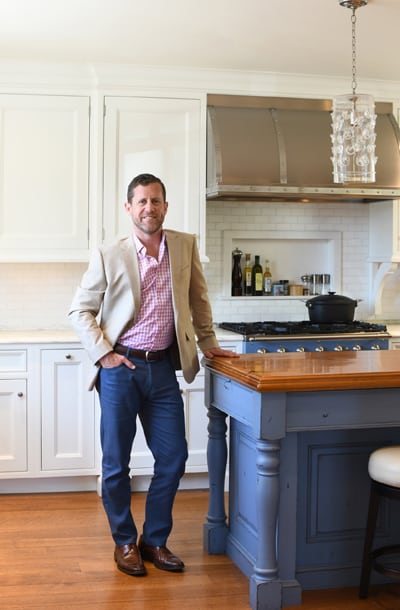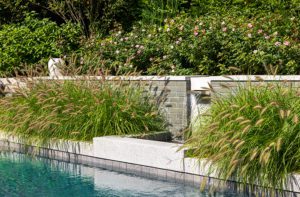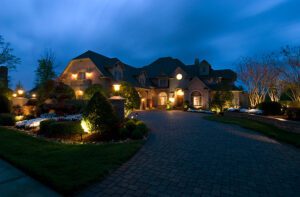5 Questions: Peter Deane
August 23, 2018
Peter Deane, of Deane, Inc., dishes about the latest in design, materials, and technology for the kitchen and beyond.
Text by Robert Kiener Photography by Jane Beiles
 1. You were originally known as Kitchens by Deane. Why the name change?
1. You were originally known as Kitchens by Deane. Why the name change?
We have been in business since 1961 and were originally known as a design firm that did high-end kitchens. But since we specialize in custom cabinetry, whether it is in the kitchen, master bathroom, closet, bar—any place with built-in cabinetry—we thought it would be a good strategic decision to rebrand to make people aware of this. People often come to us for the kitchen first, then work through the rest of the house as we develop relationships and trust. We have also done second or holiday homes for many clients after supplying design for their primary homes.
2. Why should a homeowner come to you for help?
We have a trained team that brings value to the process. That process includes design consultation, a stage where we get to learn about our clients. We ask them about their family, their storage needs, their lifestyle needs—such as whether they like to cook and how often, how many chefs are in their kitchen at a time—things like that. We take all these factors into consideration as we come up with the concepts we present. As we go through the process, we massage the design into something palatable to them and their budget. We help them navigate hurdles during the design, project management, and installation phases in kitchens, as well as other locations that need custom cabinetry such as bathrooms, closets, and mudrooms.
3. What’s an example of design issues a non-professional may not understand?
Take clearances, for example. A homeowner may not know about the engineering issues that can evolve where you open up a cabinet door and it interferes with an adjacent appliance. Designing for the proper traffic flow is another important consideration. We also often see problems with proportion and scale. Proportions need to be suitable for the size of a room. You don’t want to see doors on cabinets that are too tiny or too varied in size. We always try to create a good design rhythm throughout the space, so it is welcoming to the eye, not disruptive or too busy. Balance and proportion are keys to good design.
4. What trends are you seeing in both kitchen and cabinet design?
Technology is increasingly important, but it has evolved. Ten years ago, it was common that we would design a kitchen “command center” with a dedicated computer that sat on that desk. Now we are all more portable, so while there’s still a desire for a place to organize tasks and leave the keys and the mail and so on, it doesn’t have to be a dedicated computer or station. Instead, charging stations are really important. We frequently integrate them underneath the countertop overhang of the kitchen island. LED lighting continues to evolve—it’s now warmer and even more energy efficient—and we are increasingly adding it to our designs as under-counter lighting or interior lighting, such as inside the cabinetry, often behind a face frame so that it is invisible. For hardware, there is a revival of brushed brass. Polished and brushed nickel are still alive and well, but we see brass coming back into the market. Marble countertops are still popular, but we are seeing more quartzite. Architecturally speaking, the trend is toward “less is more.” Fewer kitchens today have heavy molding details.
5. You’ve noted differences between men and women that often affect kitchen design. For example?
I am speaking generally, but we often find that men have “gadget pride.” They tend to love gadgets and don’t want to hide them behind panels. Take the TV—it’s common that men would prefer to have the TV in the kitchen (or anywhere else to match their interests), and women often say, “Can we hide it?” Men also may want to show off things like their built-in espresso machine. Also, although every client is different, men are more interested in the functionality of the kitchen versus the overall aesthetics. They generally rely on their wife or the interior designer for that part of the execution.
Deane, Inc., Stamford, 203-327-7008, and New Canaan, 203-972-8836, deaneinc.com
Share
![NEH-Logo_Black[1] NEH-Logo_Black[1]](https://b2915716.smushcdn.com/2915716/wp-content/uploads/2022/08/NEH-Logo_Black1-300x162.jpg?lossy=1&strip=1&webp=1)







You must be logged in to post a comment.